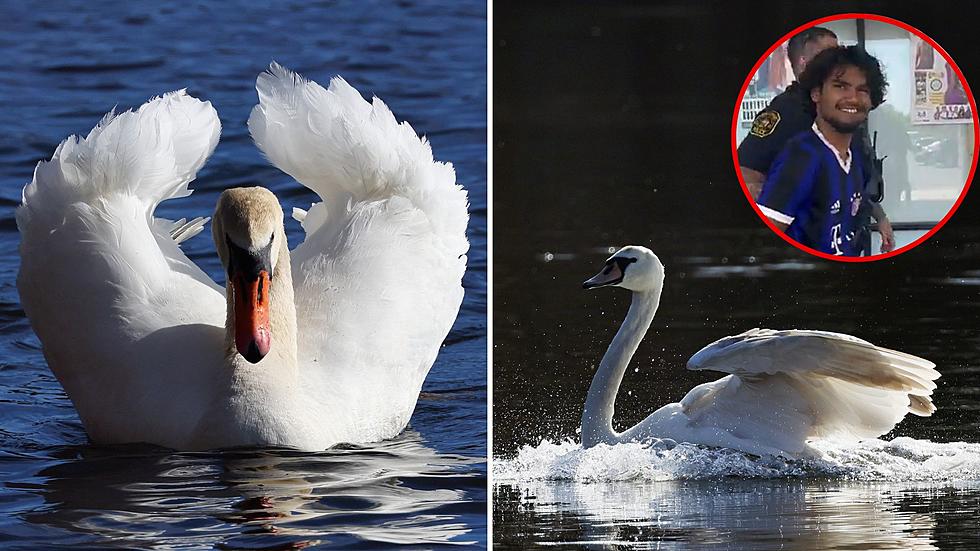
What’s the Difference Between Lake-Effect Snow and Blizzards?
Lake-effect snow slammed New York this morning. But what makes lake-effect snow different than blizzards?
Close to 3.5 million Americans are currently under Lake-Effect Snow Warnings, with a massive system expected to dump more than 30-inches of snow in some areas.
The Current Forecast
The National Weather Service warns that the area will face treacherous conditions come Monday evening.
A Lake-Effect Snow Warning has been issued for several counties, with areas warned to prepare for heavy snow and blustery winds. The system is expected to dump over 2 feet of snow in some areas and produce gusts as high as 35 miles per hour.
Northern Oneida and Herkimer County, as well as Oswego, Onondaga, Lewis and Jefferson County are under a Lake-Effect Snow Warning. Areas within Northern Onondaga County will reportedly receive higher snowfall totals.
Southern Oneida and Herkimer County, as well as Madison County, are under a Winter Weather Advisory. These areas are expected to receive up to six inches of snow and winds gusting as high as 35 miles per hour.
Read More: New York Has One of the Top 10 Most Hated Interstates in the U.S.
The NWS warns the worst of the system will occur between Tuesday afternoon and Tuesday evening.
Motorists are urged to slow down and use caution when traveling. Those planning on hitting the road during those times are urged to have emergency equipment on them like flashlights, food and water in the event of an emergency.
Lake-Effect vs. Blizzard
There are several different types of winter storms - from bomb cyclone and nor'easters, it is hard to keep track of what each of them does. Which one is the worst?
Bomb cyclones, otherwise known as a bombogenesis, are produced when a cold air mass collides with a warm air mass, such as air over warm ocean waters, and rapidly intensifies over a 24-hour period. These systems are usually triggered following a sudden drop in barometric pressure and they can be as powerful as a category 1 hurricane.
Nor'easters are used to define extratropical cyclones that barrel up the East Coast. Cold air fuels them, which is why they tend to develop closer up north. These systems form when northeast winds and moisture content combine in a low-pressure area somewhere between the North Carolina and Massachusetts coastline. They can produce heavy snow, coastal flooding, hurricane-force winds and blizzard conditions.
Blizzards are classified by strong, wintry systems that produce large amounts of snow (or blowing snow), and produce winds in excess of 35 miles per hour. Blizzards are also classified when their conditions cause low visibility, roughly less than 1/4 mile, for at least 3 hours. However, a storm can only be classified as a blizzard if it remains active and strong for over 6 hours. However, these systems have been known to last for several days.
Read More: NWS Makes Massive Changes to Winter Storm Warning System
Lake-Effect systems are now low-pressure systems and. instead, are triggered when cold air moves over the Great Lakes regions. These systems can become more powerful if the lakes aren't frozen over yet. The air mass then sucks up the moisture from the lakes and then dumps the water as snow when it moves onto land. Lake-effect systems also tend to be shorter-lived then their other wintry counterparts, and tend to max out in a day or two.
Staying Safe in the Snow
Motorists are encouraged to stay off the roads during these intense systems. If you must drive, you are encouraged to greatly reduce your speeds and drive with extra caution. Drivers should also maximize their follow distance to ensure they don't strike the vehicle in front of them in the event of a sudden braking.
When it comes to shoveling, doctors are urging people to drink plenty of water, dress appropriately for the weather, shovel while the snow is still fresh, be mindful of their back and to take it slow.
People have died from shoveling-related cardiac arrest, so be sure to be conscious of your ticker before you start scraping off your walkways.
Here are some other tips to get you ready for Mother Nature's snowy wrath
Here Are A Few Things To Do To Get Ready For A Winter Snowstorm
Gallery Credit: Ed Nice
Best of luck this week, everyone!

The Top 10 Snowiest Cities in New York State
Gallery Credit: Megan
New York's Most Miserable Cities
Gallery Credit: Megan
More From 107.7 WGNA






